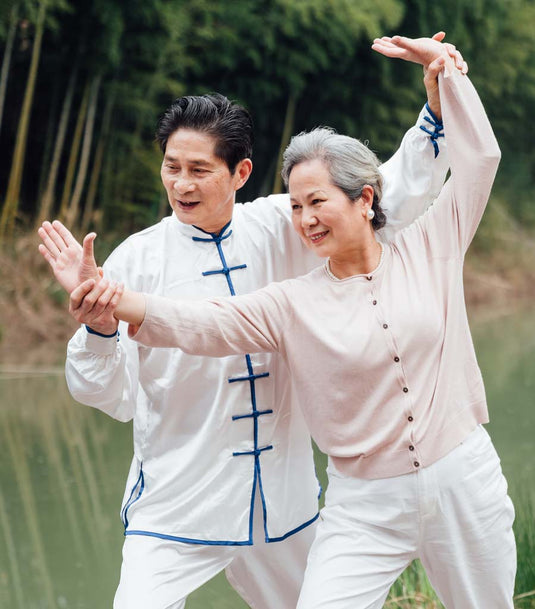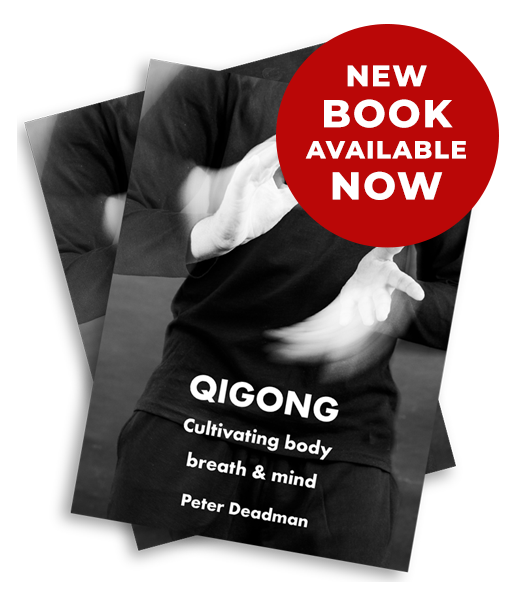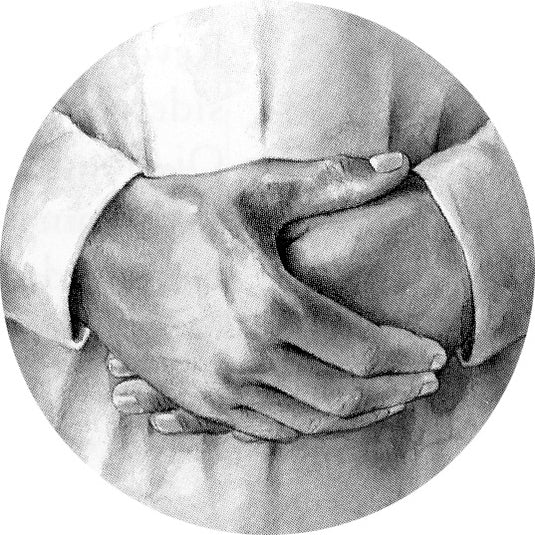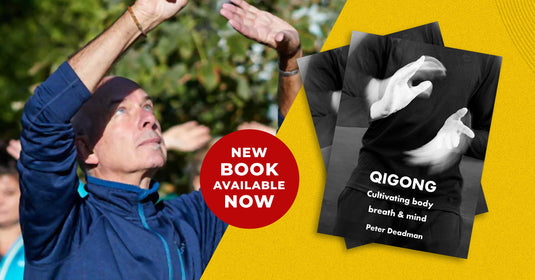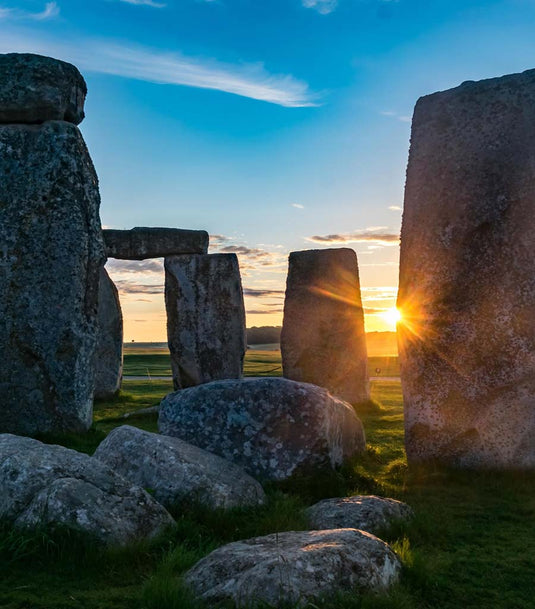“Being strong without letting strength go too far, being flexible without becoming ineffective, strength is joined to flexibility and flexibility is applied with strength.” Liu I-ming, 18th century CE
In this second blog discussing the application of yinyang theory to qigong, I want to discuss the complementary opposites of strength and softness.
Strength – yang
We all need to build and maintain sufficient strength to accomplish whatever we want to do in life. For most of us that doesn’t involve anything heroic. In a varied and ‘natural’ life, we probably want to carry all kinds of things – children, shopping, a heavy rucksack – climb hills and stairs, push baby buggies, wheelchairs or occasionally cars, paint ceilings, dig the earth, chop wood, twist lids off jars and so on. And we want to be able to carry on doing these things well into old age.
However, without dedicated application, time is not on our side. Sarcopenia’ (from the Greek ‘sarx’ = flesh and ‘penia’ = poverty) is the term used to describe the loss of muscle that characterises ageing (estimated at about one per cent a year after the age of 30 and accelerating with each passing decade) in the untended body. And as lean muscle mass diminishes, it is replaced by fat which consumes less energy. The result is that if we continue to eat as we always did, most of us steadily put on weight.
The good news, however, is that appropriate exercise can significantly slow the rate of sarcopenia, maintain strong and effective muscles and reduce the decline in metabolic activity. In fact we can build muscle at any age – right into our 80s.
It is not only muscle strength that we need to maintain, though. We also want strong sinews, strong bones and strong internal organs. The two thousand year old Yellow Emperor’s Inner Classic spells it out clearly,
“As for the back, it is the palace of that which is in the chest [i.e. heart and lungs]. When the back is curved and the shoulders drop, the palace will soon be destroyed. As for the lower back, it is the palace of the kidneys. When a person is unable to turn and to sway, his kidneys will soon be worn out. As for the knees, they are the palaces of the sinews. When a person cannot bend and stretch and if while walking he is bent forward and leans on a stick, his sinews will soon be worn out. As for the bones, they are the palace of marrow. When a person cannot stand for long and if while walking he staggers back and forth, his bones will soon be worn out.
Those who are able to maintain strength, they live. Those who fail to maintain strength, they die.”
Perhaps because I have grown vegetables for decades, I am fond of the term ’cultivation’. In the same way a garden needs constant care, the body needs to be cultivated regularly to maintain strength (alongside all the other body skills such as balance, integrated movement, flexibility, joint alignment and so on). My experience is that qigong which has its roots in the internal martial arts (even if we have no great interest in the martial arts themselves) is a powerful way to achieve this. By practising a range of qigong styles (for example baduanjin, taichi qigong, five animal forms etc.) we mobilise and strengthen every joint, bone, blood vessel, nerve, fascial sheath, muscle, sinew and organ in the body.
It is especially important to strengthen the waist, lower back and legs. These are considered the domain of the Kidneys in Chinese medicine, and the vigour of the Kidneys and their stored essence (jing) is the ultimate determinant of how well we age and how long we live. Without cultivation, the lower back and legs usually weaken first as the body ages. Our balance deteriorates, we are more likely to stumble and fall, and we lose the effortless trust in leg agility and sure-footedness we had when we were young.
Softness – yin
“Human beings in life are soft and weak, in death are always stretched, stiff, and rigid. The myriad things, grass and plants, in life are soft and pliant, in death are withered and dry. Therefore it is said, ‘Stiffness and rigidity are indicators of death; softness, weakness, are indicators of life’.” Daodejing, 4th century BCE
There are many unique features of the traditional Chinese self-cultivation tradition, and one of these is the emphasis on softness. This dates back at least as far as the 2500 year old Daodejing. Written during the chaotic Warring States period of Chinese history, it has been interpreted both as a profound philosophical work and a manual on how to survive dangerous times (go with the flow, keep a quiet mind, maintain a humble position etc.), taking as its model the reed which bends with the wind rather than the mighty oak.
Nowhere is this principle found more clearly than in the principle of ‘song’ in the practice of tai chi (taijiquan), other internal martial arts and qigong. Song means soft, loose, relaxed etc. and applies not only to the body but to the mind as well. Those who practise song know how difficult it is, indeed it is much much easier to tense up than to stay soft – especially when we are facing a difficult task or an opponent. We could say that developing song is a lifetime task but its benefits are immense and apply to every aspect of life.
It is hard to think of any activity – singing, talking, hitting a tennis ball, running for Olympic gold, writing, brushing teeth, having sex – that goes better with tense muscles or a tense mind. Tension impairs integrated and aligned flowing movement (the secret of seemingly effortless strength), unnecessarily activates ‘parasitic’ muscles (i.e. those that are not needed in the task, like clenching the teeth when trying to thread a needle), and reduces free flow of qi, blood and body fluids through the soft tissue and blood vessels. The simple fact is that it is much easier to activate muscle activity than to inhibit it.
Integrating yin and yang – strength and softness
As Liu I-ming’s quote at the start of this blog emphasises, we need to combine strength with softness, and that becomes one of the most interesting challenges in practice. We can take qigong standing meditation as an example. It is practised in a variety of postures, some of which could be described as stress positions. The knees stay bent, loading the thigh muscles, and the arms are often raised, soon revealing any habitual tightness in the shoulders. We have to find a way to maintain our posture (strong, open, rooted, aligned) while constantly practising release and softness, even when the position becomes uncomfortable or painful. If we relax too much, we lose postural integrity. If we over-tighten our muscles to maintain the posture, we worsen the discomfort.
The same principle applies right through qigong practice. When we pull the bow in the second baduanjin movement, or punch in the seventh, have we gone for a kind of false strength by tightening muscles throughout the body, or on the other hand have we failed to commit to the movement and become flaccid and ineffectual?
I would say that working with strength and softness in qigong is a constant (but welcome) challenge and one that feeds through into many other aspects of our lives. In work, in relationships, in self-cultivation are we pushing too hard or not enough?
Daoism teaches the art of wu wei or non-action. Often (mis)understood as complete disengagement from human affairs it is better understood (in the words of Sinologist Jean François Billeter) as a “state of perfect knowledge of the reality of the situation, perfect efficaciousness and the realization of a perfect economy of energy”, or as is written in the 3rd century BCE Annals of Lu Buwei,
“Were the strongman Wuhuo to pull the tail of an ox so hard that the tail broke off and he exhausted all his strength, he would not be able to move the ox because he would be contravening the natural direction of the ox. But were a lad a mere five cubits tall to pull the ox by its nose ring, the ox would follow where he led because he would be according with the natural direction of the ox.”
In my own practice I like to contemplate and learn from water. It is powerful enough to overcome almost any obstacle, but when we try to grasp it – to feel its strength – we find only softness.
